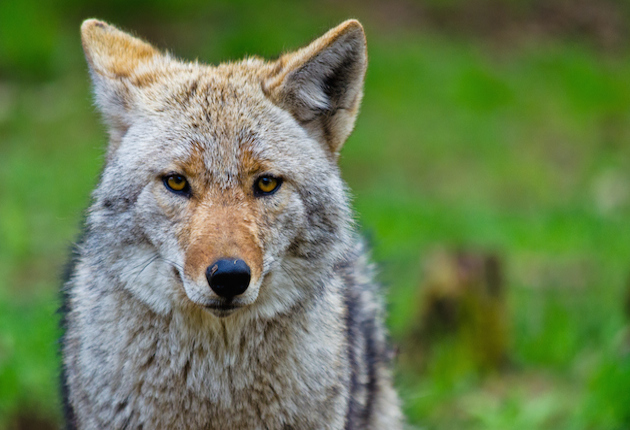Pet owners in Bloomington, Minnesota, don’t just have nightly coyote attacks to fear. A song dog described as a “serial pet killer” by the Star Tribune has been catching and killing dogs in broad daylight, right from under their owners’ noses. It’s attacks were first reported July 28; since then, at least six dogs have been attacked, five of them fatally.
Bloomington lies just south of Minneapolis and southeast of St. Paul. Deputy Police Chief Mike Hartley thinks the coyote came from the nearby Minnesota River Valley, where the Minnesota Valley National Wildlife Refuge lies just south of Bloomington. Coyotes are semi-regular visitors but do not usually stay inside city limits.
Wherever it came from, this coyote quickly made itself at home on a section of Old Shakopee Road. All of its attacks have take place on a five-mile stretch of Shakopee, as well as another incident occurred in the area in February 2015. Whether the February attack was by the same coyote is anyone’s guess.
Not only is the Bloomington coyote brazen enough to attack pets in sight of their owners, but it has also taken to jumping over fences to enter yards.
Dog food may be the attractant causing the attacks. The readily available food source is often left outside in backyards for pets to eat. Pet owners were cautioned to not intentionally or unintentionally feed wildlife, and to prevent garbage from being accessed.
Territoriality might also be leading the coyote to kill perceived rivals. Whatever the cause, the effect is the same. Hartley said the coyote will likely change pet owning in Bloomington forever.
“The days of just checking [on pets outside] every half-hour are probably done,” Hartley told the Star Tribune.
The city of 85,000 has taken the matter seriously enough to post warnings on the Bloomington website.
“Due to coyote activity in the southwest area of the city, we advise all residents with small- to medium-sized dogs to be on alert,” the public awareness statement read. “We have received several reports of recent coyote attacks on dogs, some resulting in death. This alert also applies to cats.”
Bloomington officials told pet owners to “haze” the coyote in case it made an appearance.
“If you see any coyotes, haze them—yell, clap or bang pots and pans together, creating loud noises to scare the coyotes away,” the statement said. The idea is to create an experience that discourages the coyote from returning for a free meal.
Bloomington provided additional links for living with urban and suburban wildlife, one of which suggested live traps for dealing with the coyote. Citing Minnesota State Statute 97B.655, the website said “property owners or occupants [are legally allowed] to live trap certain nuisance wildlife species causing damage.”
However, the 2014 version of the statute stated “owners and occupants may take certain animals,” including raccoon, bobcat, mink, squirrel, rabbit, hare, fox, opossum, muskrat, and beaver. Coyotes were not listed.
The city is facing what many sportsmen have known for some time: coyotes are a growing problem in the United States’ urban areas. Like white-tailed deer, coyotes are thriving in non-hunting areas like the concrete jungles and their suburban sprawl. Ultimately, residents may have to simply wait out the devil dog’s reign of terror.
Under a link for coyote control, Bloomington’s site acknowledged a lack thereof:
Coyotes are proving to be both adaptable and deadly—a dangerous combination.
Cover image: Thinkstock

